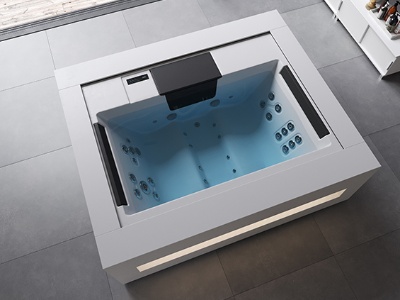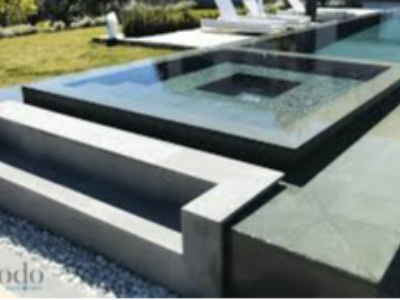
Protecting your pool with an automatic cover is an effective solution for securing the pool, limiting evaporation and reducing maintenance. But between a submerged and an above-ground cover, which one should you choose? Each option has specific advantages depending on the budget, the desired aesthetic and the installation constraints. Making the right choice optimises safety while improving user comfort.
Why install an automatic pool cover?
An automatic cover performs several essential functions:- Secure the pool: Compliant with NF P90-308 standards, it prevents accidental access to the pool and reduces the risk of drowning.
- Facilitates maintenance: By covering the pool, it limits the presence of debris and impurities.
- Optimises energy consumption: It retains the heat of the water and reduces evaporation, which saves on heating costs.
- Improved comfort: thanks to its motorised system, it opens and closes quickly and effortlessly.
The submerged cover: an aesthetic and discreet solution
The submerged cover is integrated directly into the pool, below the waterline. It is generally concealed in a box at the bottom of the pool or behind a wall, making it almost invisible when folded away.Advantages of the submerged cover
- Impeccable aesthetics: As it is concealed, it preserves the visual harmony of the pool and its surroundings.
- Space saving: Unlike above-ground covers, it does not take up any space around the pool.
- Increased protection: It is less exposed to the elements and external aggressions, which extends its lifespan.
- Ideal for new swimming pools: It integrates perfectly into modern constructions from the design stage.
Disadvantages of the submerged cover
Despite its many advantages, the submerged cover has a few limitations:- More complex installation: It requires significant work and a dedicated space in the pool for blade storage.
- High cost: It is more expensive than an above-ground cover due to the labour and specific equipment required.
- More difficult maintenance: it is more difficult to access the internal components in the event of a breakdown.
The above-ground shutter: simple and affordable installation
Unlike the immersed shutter, the above-ground shutter rests on the surface of the water and is wound around a motorised shaft located outside the pool. It is more visible but offers an economical and easy-to-install alternative. Advantages of the above-ground cover Quick installation: It does not require heavy work and can be installed on an existing pool. More affordable cost: It is generally cheaper than an immersed cover.Disadvantages of the above-ground shutter
However, this type of shutter has a few disadvantages:- Less discreet appearance: It remains visible at the edge of the pool, which can be perceived as a disadvantage for certain garden configurations.
- Less protection against the elements: Exposed to UV rays and external aggressions, it can wear out more quickly.
- Takes up space: The roller takes up space on the poolside.
Which cover should you choose according to your needs?
The choice between an immersed cover and an above-ground cover depends on several criteria:- Budget: If you are looking for a cheap solution that is quick to install, an above-ground cover is more suitable. On the other hand, if you can invest more for an aesthetic and long-lasting result, the submerged cover is preferable.
- Type of pool: For a new construction, the submerged cover is an excellent choice. For an existing pool, an above-ground cover is easier to integrate.
- Frequency of use: If the pool is used all year round, an underwater cover or




